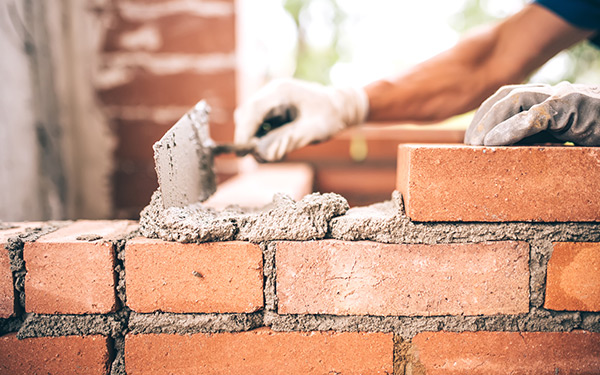Quality Paver Installation Services to Change Your Outdoor Area
Quality Paver Installation Services to Change Your Outdoor Area
Blog Article
Unlocking the Tricks of Lasting Stonework Building And Construction Practices for Eco-Friendly Buildings
Amongst the myriad techniques to environmentally friendly building, lasting stonework building stands out as a time-tested and sturdy approach that holds a wide range of untapped potential. From the choice of materials to innovative building and construction techniques, the secrets to achieving sustainability within masonry building and construction are complex and fascinating.
Advantages of Lasting Masonry Building
Accepting sustainable stonework construction techniques not just decreases ecological influence but also uses lasting economic benefits to builders and areas. By utilizing materials like recycled blocks, blocks, and rocks, building contractors can significantly reduce the carbon footprint of their tasks while advertising resource effectiveness. Additionally, sustainable masonry building and construction methods, such as proper insulation and thermal mass buildings, can boost power performance within structures, causing decreased functional costs gradually.
In addition, the resilience and resilience of masonry frameworks add to long-lasting economic benefits. Structures constructed making use of sustainable stonework techniques usually need less repair and maintenance, converting to set you back financial savings for builders and residential or commercial property owners. The long life of stonework materials also makes certain that structures remain secure and safe and secure, lowering the need for frequent improvements or substitutes.
Eco-Friendly Masonry Products
Using environment-friendly stonework materials is a pivotal step in the direction of boosting the sustainability of construction techniques and lessening ecological impact while making the most of lasting economic benefits. Lasting stonework products are sourced, created, and made use of in a manner that reduces overall environmental influence. Lasting concrete blocks integrate recycled aggregates and might include improved insulation residential properties, contributing to energy effectiveness in buildings.
In addition, natural materials like adobe, rammed planet, and straw bales offer excellent thermal mass residential properties, reducing the need for home heating and cooling down power. These products are usually in your area offered, advertising regional economic climates and minimizing transportation-related carbon emissions. By choosing environmentally friendly stonework products, construction jobs can dramatically minimize their environmental footprint and contribute to the development of healthier, extra lasting built settings.
Energy-Efficient Stonework Strategies
Energy efficiency plays an important duty in enhancing the sustainability of stonework building practices. One vital energy-efficient stonework strategy is the usage of thermal mass, which includes including thick products like concrete or block right into the building's framework to absorb and store warmth.

Developments in Sustainable Stonework
Recent advancements in sustainable masonry methods have actually produced cutting-edge methods that are improving the building sector. One such innovation is the advancement of self-healing concrete, which uses microorganisms embedded within the concrete to recover fractures autonomously. This breakthrough not just minimizes upkeep costs but also improves the durability of masonry structures, adding to their sustainability.
One more remarkable innovation is making use of recycled accumulations in stonework construction - masonry contractor. By incorporating products such as crushed ceramic waste or recycled glass into concrete blends, contractors can minimize the environmental impact of construction projects while keeping architectural honesty. This method not just draws away waste from land fills but additionally conserves natural deposits, making it a vital innovation in lasting stonework construction
Moreover, the assimilation of find more info electronic layout devices, such as Structure Details Modeling (BIM), is revolutionizing the method masonry frameworks are intended and built. BIM allows for more accurate computations, reduced product wastage, and improved power effectiveness, ultimately leading to even more sustainable building techniques. These developments jointly symbolize a promising future for sustainable masonry building and construction in the period of eco-friendly structures.
Future Trends in Stonework Sustainability
With the ingenious strides made in lasting masonry methods, the future patterns in stonework sustainability are poised to additional change the construction industry. Among the essential fads forming the future of stonework sustainability is the increased combination of innovation. Advancements such as Building Info Modeling (BIM) and digital truth simulations are being utilized to enhance stonework building procedures, bring about reduced material waste and boosted power efficiency in structures.
In addition, the development of novel sustainable materials is established to play a substantial duty in boosting the eco-friendliness of stonework building and construction. masonry contractor. Advancements like self-healing concrete, recycled aggregates, and bio-based binders are acquiring grip for their capability to minimize environmental impact while preserving structural integrity

Conclusion
Finally, lasting masonry construction practices provide many benefits for green structures. By utilizing eco-friendly go to this site materials and energy-efficient methods, masonry can contribute to a much more lasting built environment. Advancements in lasting masonry are continuously being developed to even more boost the environmental performance of structures. Looking in the direction of the future, the fad of masonry sustainability is expected to grow, resulting in more eco-friendly and energy-efficient building methods in the years ahead.
Report this page